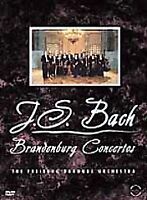About
All feedback (465)
- baystatebooks (27850)- Feedback left by buyer.Past monthVerified purchaseQuick response and fast payment. Perfect! THANKS!!
- second.sale (4093077)- Feedback left by buyer.Past monthVerified purchaseGood buyer, prompt payment, valued customer, highly recommended.
- worldofbooksusa (1168804)- Feedback left by buyer.Past monthVerified purchaseGood buyer, prompt payment, valued customer, highly recommended.
- under_retail_4_less (11304)- Feedback left by buyer.Past monthVerified purchaseA valued eBayer ~
- hpb_movies (43238)- Feedback left by buyer.Past monthVerified purchaseThanks for your order!
- rarewaves (623893)- Feedback left by buyer.Past monthVerified purchaseA pleasure to do business with.
Reviews (14)

Nov 22, 2017
Vintage historically informed performance hasn't held up well
I avoided this recording for decades after it was fairly well blasted in the musical press on its release on LP circa 1980. My curiosity is satisfied and I doubt I'll listen to it again. The first problem is the use of boys for the soprano and contralto solos. They have intonation and pitch problems and breath control issues that can't cope with with long lines of Bach's often florid writing. The trio in Part V is a trial to the ears. It would have been charitable to avoid naming them in the documentary material. The tenor soloist/evangelist sings well but is bland and uninvolved with the narrative compared to his recorded competition - most notably the still lamented Fritz Wunderlich under Karl Richter. The bass soloists is the best of the lot but even he seems hamstrung by the limitations of the boy soprano in the Part II duet "Herr, dein mitlied," sounding constrained and tentative. The period instrument ensemble plays pretty well and includes luminaries of the period like Edward H. Tarr on trumpet. Even here the passage of nearly forty years has raised the technical standards on what can be expected from "old" instruments. On the positive side, the choral work is good. I suspect Scheidt's leadership was compromised by the weakness of the child soloists. He also indulges in some exaggerated retards in ending cadences of the big choruses. The recorded sound is good late analog vintage. Competing period accounts by Gardiner, Herreweghe, Jacobs, and especially, Harnoncourt's first account offer more for the money. Harnoncourt's boy soloists are head and shoulders above those here. The others use adults for all solo roles. Harnoncourt joins Richter's traditional account as my reference recordings of the work. This one, I'm afraid is a definite "no."

Jan 17, 2019
Fine Performance and good visuals
The DVD gets off to a rousing start with a rustic sounding performance of the first concerto that reflects its likely origins as an overture to the Hunt Cantata. The orchestra handles the period instruments with aplomb. The other five concertos maintain the high standard set in the opening. The camera work allows us to see the agile fingerings of the harpsichord soloist in Bach's over-the-top long version of the cadenza in No. 5's first movement. Leader von der Goltz's queues by lifted brows and subtle gestures are fascinating and the whole company seems to be enjoying themselves. The venue (Spiegelsaal, Koethen Castle) adds visual appeal and a degree of authenticity as Bach was kapellmeister to the reigning prince when the Brandenburg manuscript was compiled.

Oct 31, 2016
Times change
1 of 1 found this helpful Despite the fact that this 50 some year old recording is a Library of Congress heritage item, it is no longer recommendable as a first choice for the work. To begin with, it is extensively cut as was common for the time. Conductor Ormandy indulged the soprano's refusal to sing "Rejoice Greatly" (as she indicated in an interview years later). The soloists, that issue aside, are a decent lot and typical of the romanticized singing of eighteenth music common at the time. The orchestra is augmented a la Mozart and Hiller with additional woodwind and brass - and it is the Fabulous Philadelphia. The acoustic varies from solo sections (bright and focused) to choral (dull and distanced). Was the orchestra recorded separately and later superimposed on the chorus? I know that many listeners hold this venerable recording in high esteem but I feel there are many other options that give a better sense of the essence of the oratorio.
